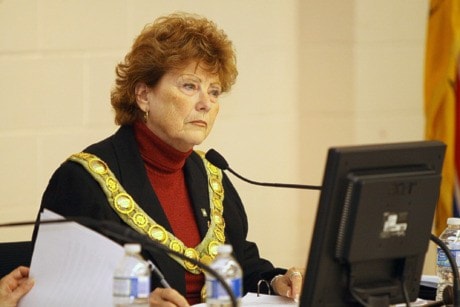Modest growth in Tsawwassen's town centre is at the heart of staff's new area plan proposals to Delta council.
Chief Administrative Officer George Harvie had been asked to revisit the area plan recommendations last fall after council experienced an outpouring of opposition to proposed density changes around the town core.
Monday evening council approved that Harvie's recommendations move forward to a public hearing. These aim to:
• focus modest growth in the town centre and the 56th Street corridor, keeping the town centre residential cap that was set in 1992 of 1,000 units;
• protect existing single family residential areas to preserve current neighbourhoods;
• provide consideration of neighbourhood infill on a case by case basis, subject to community consultation;
• and consider a future review of the area plan in response to the impacts of development at the Tsawwassen First Nation.
As of 2010, the number of residential units in the town core was 758. To encourage development of the remaining 242 units in a way that provides underground parking, less ground coverage and more open space, Harvie recommended the maximum building height in a limited area of the town core be increased from four to six storeys and the maximum density per hectare be increased.
He also recommended that north of the town centre along 56th Street (between 14B Ave. and 16 Ave.) the height limit be increased from three to four storeys to help support the economic viability of development along that corridor.
Should council pass these changes following consultation with the public, staff will be asked to report back with new development permit guidelines.
Century Group president Sean Hodgins said in a phone interview that maintaining the 1,000 unit cap "is completely ineffectual in terms of encouraging any growth in the town centre."
"To say 'we have 250 units and we're going to keep the cap,' that's not going to entice the development community to invest a lot in the town centre."
Regarding the proposed height increases in the town core and to the north, he acknowledged these would be improvements, but marginal ones.
In his report Harvie said Tsawwassen's growth is constrained by its boundaries defined by bodies of water and an international border, as well as by a transportation network that relies on two roads in and out of the community.
He also said Tsawwassen needs to consider the potential impact of growth in the neighbouring Tsawwassen First Nation, which has "ambitious" development goals for retail, commercial, industrial and residential development.
"Given all of these considerations, the Tsawwassen Area Plan should reflect that future growth and change will almost exclusively take the form of infill development, and that such growth should be modest in scope," Harvie wrote.
A public hearing on the proposed bylaw amendments to the area plan is set for March 1 (where the proposal to apply for Agricultural Land Reserve designation for the Southlands will also be up for discussion—click here for the story).
Harvie "strongly recommended" council press to complete the review of the Tsawwassen Area Plan, a process that the Tsawwassen Area Plan Committee began in the spring of 2009 and has cost more than $100,000.
This past fall, Mayor Lois Jackson announced staff's initial proposed changes to density around the town core be abandoned after facing criticism from residents who attended a series of public meetings.
Recommendations included land designation changes that would have allowed for more townhouses and apartments in neighbourhoods near the town centre currently made up of single family residences.
The fervent opposition surprised council and staff, as they had sent out an Ipsos Reid survey earlier in the year that saw more people participate than the number who voted in the last municipal election. About 60 per cent of respondents voted to retain the current four storey height limitation in the town centre, and 62 per cent voted for more townhouses and apartments close to the town core.
It was after Jackson's announcement that staff were sent back to the drawing board prepare a report reflecting the feedback from the public hearing process.
The current Tsawwassen Area Plan was adopted in 1992.
